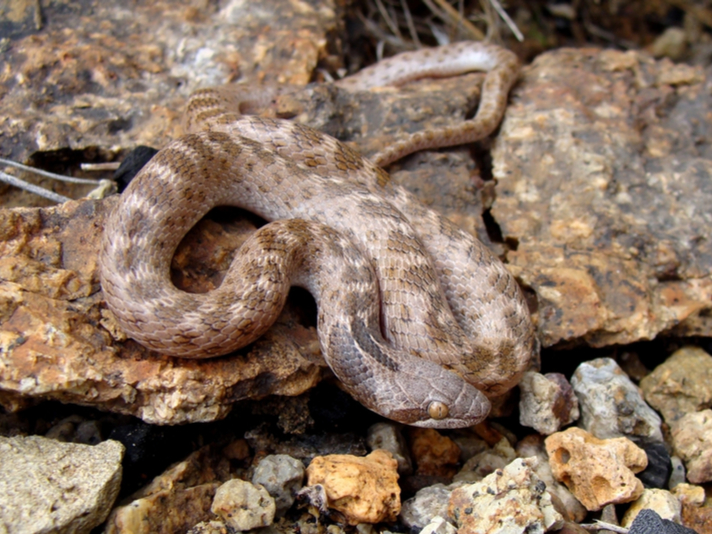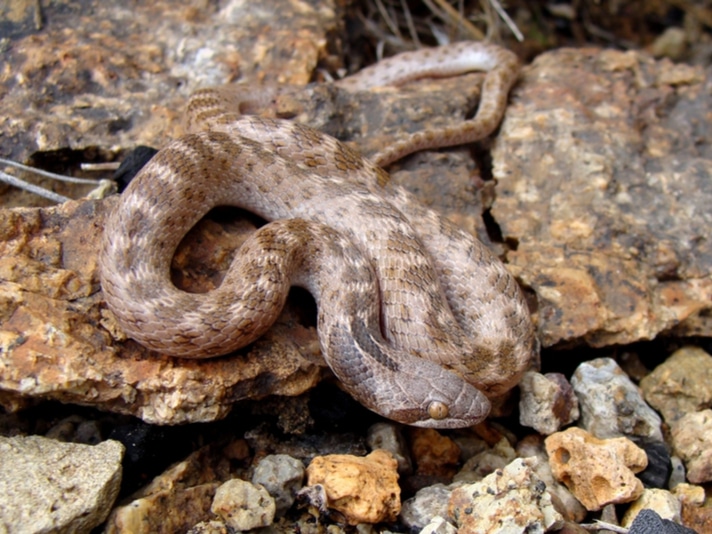Night snakes are abundant on roads in the southwestern U.S. on warm nights during the rainy season.
Question: Does anyone keep American night snakes? I think they’re beautiful, but no one I can find works with them. Why is that?
Judy Somers, Flagstaff, Ariz.

Matt Jeppson/Shutterstock
Night snakes are abundant on roads in the southwestern U.S. on warm nights during the rainy season. This is a Texas night snake, Hypsiglena torquata jani, one of the most common species.
Answer: You may be the sole member of the Night Snake Fan Club. These common little snakes have several things going against them:
- • a secretive, nocturnal lifestyle
- • a size that’s generally too small to allow for comfortable handling (adults average 12 to 16 inches, occasionally exceeding 24)
- • drab earthy colors and pattern
- • a preference for small food items, such as lizards, that mostly need to come from the wild.
A fifth reason is that the competition from popular herp species available in the pet trade leaves night snakes in the dust. They are rear-fanged, too, although not considered dangerous to people. This last disadvantage is probably not even a factor when it comes to keeping them out of popular circulation as pets, because most keepers are likely not even aware, or would care, about them being a rear-fanged species.
You are certainly welcome to keep specimens you find in the wild, assuming you have any necessary paperwork allowing you to collect and keep them legally. Keeping night snakes would likely be an interesting challenge. Record your experiences feeding and maintaining them, and offer them as natural history notes to some scientific publications, such as those put out by the Society for the Study of Amphibians and Reptiles (SSAR). I don’t know anyone who keeps American night snakes of the genus Hypsiglena, so whatever information you can provide might be of interest to readers.


